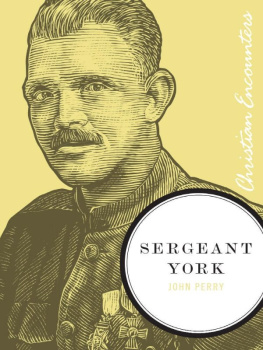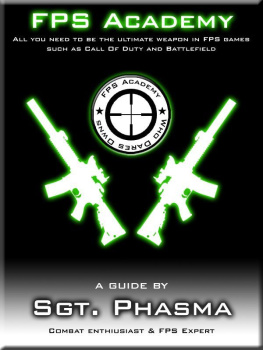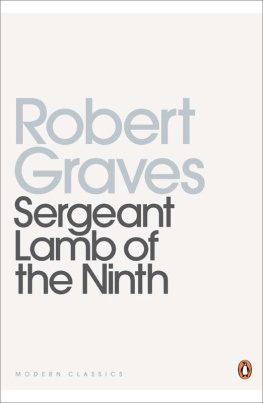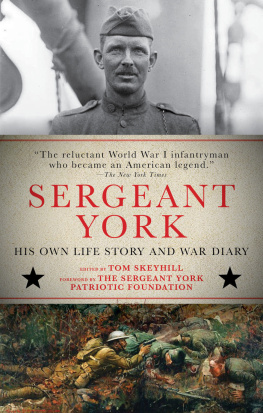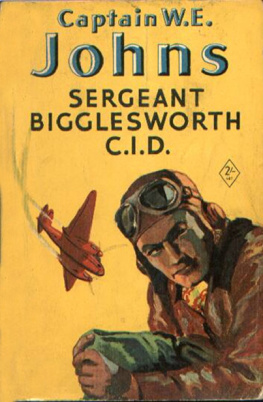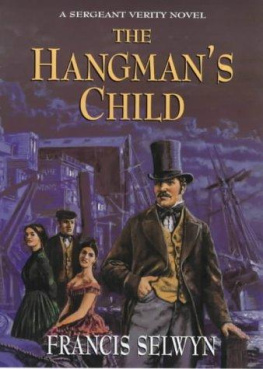Mawyer - Sergeant Wolinski and the Great War
Here you can read online Mawyer - Sergeant Wolinski and the Great War full text of the book (entire story) in english for free. Download pdf and epub, get meaning, cover and reviews about this ebook. year: 2019, genre: Non-fiction. Description of the work, (preface) as well as reviews are available. Best literature library LitArk.com created for fans of good reading and offers a wide selection of genres:
Romance novel
Science fiction
Adventure
Detective
Science
History
Home and family
Prose
Art
Politics
Computer
Non-fiction
Religion
Business
Children
Humor
Choose a favorite category and find really read worthwhile books. Enjoy immersion in the world of imagination, feel the emotions of the characters or learn something new for yourself, make an fascinating discovery.

- Book:Sergeant Wolinski and the Great War
- Author:
- Genre:
- Year:2019
- Rating:5 / 5
- Favourites:Add to favourites
- Your mark:
- 100
- 1
- 2
- 3
- 4
- 5
Sergeant Wolinski and the Great War: summary, description and annotation
We offer to read an annotation, description, summary or preface (depends on what the author of the book "Sergeant Wolinski and the Great War" wrote himself). If you haven't found the necessary information about the book — write in the comments, we will try to find it.
Mawyer: author's other books
Who wrote Sergeant Wolinski and the Great War? Find out the surname, the name of the author of the book and a list of all author's works by series.
Sergeant Wolinski and the Great War — read online for free the complete book (whole text) full work
Below is the text of the book, divided by pages. System saving the place of the last page read, allows you to conveniently read the book "Sergeant Wolinski and the Great War" online for free, without having to search again every time where you left off. Put a bookmark, and you can go to the page where you finished reading at any time.
Font size:
Interval:
Bookmark:
Sergeant Wolinski and the Great War
GARY D. MAWYER
Copyright 2016 Gary Mawyer
Second Edition
All rights reserved.
ISBN: 6191867
ISBN 13: 978-153093169
Sergeant Wolinski and the Great War
Frank Wolinski was a first generation American of Polish ancestry, born in Chicago in 1888. During World War 1, then called the Great War, he served in the 2nd Platoon of Company C, 1st Battalion, 47 th Infantry Regiment. His regiment was part of the 7th Brigade of the 4 th Division of the American Expeditionary Force (A.E.F.) sent to France in the Great War . He received combat clasps for the sector front northwest of Chateau Thierry, the Aisne-Marne Offensive, the St. Mihiel Salient, and the Argonne Forest. He was decorated twice and promoted to platoon sergeant, and took part in the occupation of Germany, returning home in the summer of 1919.
Sergeant Wolinski survived combat under the grim conditions of industrialized warfare. He was severely gassed and suffered a head wound that left a lifelong scar. In a later war he would have qualified for the Purple Heart, but the Purple Heart had been discontinued after the Revolutionary War and was not reinstituted until 1932. No Purple Hearts were issued in the Great War. If they had been, over a quarter of a million men in the front line divisions would have qualified for one. The 4 th Division of the A.E.F. suffered over 50% casualties in men killed or severely wounded. In Company C, 65 men and two officers were killed in action and four times as many were wounded and evacuated over a period of less than four months. The 4 th Division also claimed the highest gas casualties of any American division. Only the most serious gas cases were actually counted as casualties.
.

Sgt. Frank Wolinski in France
Frank Wolinskis Victory Medal ribbon included two Citation Stars. The Citation Star was authorized by Congress in July 1918 for each citation of an Army officer or enlisted man for gallantry in action not warranting the award of a Medal of Honor or Distinguished Service Cross. The Citation Star was made a separate medal and ribbon in 1932, and thereafter called the Silver Star. In the 1918 army this embellishment for the campaign ribbon was the third-highest combat decoration the Army recognized.

Victory medal, ribbons and collar disk.
The 4 th Division received various unit citations from the French government, which its veterans were entitled to wear as ribbons, including the plain blue ribbon of the Legion of Honor. Sergeant Wolinski was also entitled to a German Occupation campaign ribbon. Demobilization was rapid after the Great War and most men were out of uniform before the decorations came through. The Victory Medals arrived by mail.
In reconstructing Frank Wolinski's wartime experienceswhere he went, what he saw, how he might have felt about what he sawhis surviving personal documents are especially telling. These include half a notebook, a mimeographed letter of commendation issued at division headquarters in France in 1919, and two postcards, one showing a training camp in 1917 and the other the German town of Dumpelfeld am den Ahr where his platoon was garrisoned from April to July 1919. The 4 th Division also had excellent commissioned history issued in 1920, The 4 th Division in the Great War , written by Christian Bach, a division staff officer, and Henry Hall, a London Times war correspondent. Other published records and histories are varied and numerous but two sources stand out, the 1920 Michelin Illustrated Guides to the Battlefields (1914-1918) , an invaluable and concise series, and the American Battle Monuments Commissions American Armies and Battlefields in Europe , published in 1938 with a definitive set of 1:100,000 scale topographic maps. Also vital is Harry Zanders front line account in his 1933 book, Thirteen Years in Hell , of which more later.
Frank Wolinski's pocket-sized notebook is a curious artifact. It is actually a notebook torn in half, and most of the pages are hand-copied from the 1918 manual for the Browning Automatic Rifle, a weapon that was not issued until September 1918. As discussed later, there are reasons to think that copying the B.A.R. manual was the original purpose of the notebook. Three family addresses in Chicago and addresses for several men in his platoon are written in on odd pages. The other entries in the notebook include a platoon roster, probably dating from 1919, two lists of billets (housing assignments), the last of which is probably in Dumpelfeld, and a transport roster of 41 men assigned to a railroad boxcar. The 41 men in the boxcar were from several platoons of two different companies; the boxcar in question was most likely their transport out of Germany.

Frank Wolinskis Wartime Notebook
Beginnings
The United States entered the Great War on April 6, 1917, which happened to be Good Friday. Despite tremendous national enthusiasm and a huge wave of volunteers and draftees, mobilization was slow. Americans had mainly been ignoring or deploring the war up to the point the U.S. entered it. The United States army was smallsmaller than the Portuguese or Dutch armiesand poorly equipped. The largest permanent infantry units were the regiments. After the declaration of war against Germany, the number of regiments was increased and regiments were grouped into Regular Army divisions. The United States also had a large National Guard, including units that had recently mobilized for the punitive expedition against Pancho Villa in Mexico. National Guard regiments were grouped into National Guard divisions. Accomplishing this reorganization took the rest of 1917. The War Department proposed to increase the army from under 200,000 troops to one million men by January 1918, two million by July 1918 and three million by January 1919. While volunteers and draftees poured into the army in almost unmanageable numbers, the task of arming this force with modern weapons was handled with mixed success.
Frank Wolinski registered for the draft in June 1917. In November 1917 he sent a postcard home from Camp Grant, at Rockford, Illinois. His military destiny took shape in December 1917, when the 47 th Infantry Regiment and three other regiments, along with two regiments each of artillery and engineers and two heavy machine gun battalions, were grouped together on paper as the 4 th Division and nicknamed the Ivy Division, based on the Roman numeral IV. A shoulder patch with a rosette of four ivy leaves was designed but the war was over before these shoulder patches could be issued. The regiments of the 4 th Division were comparatively venerable units of the Regular Army but their new manpower mostly had no military experience.
On December 10, the units of the 4 th Division began to assemble in Camp Greene, North Carolina, outside Charlotte. Recruits came from all over the United States, volunteers and draftees alike. Since the first elements of the 4 th Division were drawn from other training camps, such as Camp Grant, Frank Wolinski was probably an early arrival at Camp Greene.
We have no way of knowing why Frank Wolinski went to war. He was 29, older than the average soldier. He was a skilled machinist, whose employer held his job for him until he returned from military service. His service record along with the records of tens of thousands of other doughboys was destroyed in a government warehouse fire many decades ago. He may have volunteered. He may have been drafted. He may have had prior military service. Enormous numbers of young men volunteered for the U.S. military in the Great War, and an equally enormous number of draftees shared many of the same patriotic and idealistic feelings as those who volunteered.
Font size:
Interval:
Bookmark:
Similar books «Sergeant Wolinski and the Great War»
Look at similar books to Sergeant Wolinski and the Great War. We have selected literature similar in name and meaning in the hope of providing readers with more options to find new, interesting, not yet read works.
Discussion, reviews of the book Sergeant Wolinski and the Great War and just readers' own opinions. Leave your comments, write what you think about the work, its meaning or the main characters. Specify what exactly you liked and what you didn't like, and why you think so.

